In a blog post in the House of Commons Library blog by Louisa Brooke-Holland looks at Royal Navy warship movements in the Far East.
In a highly unusual move, the UK is sending three warships to Asia-Pacific in 2018, marking the first time in five years that a Royal Navy warship has travelled to the Far East.
The Royal Navy has a limited number of warships and a large number of commitments that largely confine the surface fleet to the Atlantic, Mediterranean and the Gulf. Whilst it isn’t out of place for a Navy or Royal Fleet Auxiliary ship to steam to Asia-Pacific, it is rare to deploy three in a single year. Such British deployments to North-East Asia have been deemed ‘unprecedented’ since the 1950s Korean War.
So why now?
Ongoing tension in the Korean Peninsula certainly provides impetus for the deployments. The Defence Secretary, Gavin Williamson MP, pointedly mentioned North Korea when announcing that HMS Sutherlandand HMS Albion would be deployed.
The UK is one of the 16 signatories to the United Nations Declaration that ended conflict on the Korean Peninsula in 1953 and remains a member of UN Command. Richard Reeve, director of the Sustainable Security Programme at Oxford Research Group, argues that taken together with the RAF Typhoon exercises in 2016, “such British deployments to North-East Asia are unprecedented since the 1950s war”.
Deepening defence relations with Japan is also high on the agenda and is HMS Argyll’s main port of call. As is reaffirming the UK’s commitment to her Five Powers allies: Australia, New Zealand, Malaysia and Singapore.
The deployments mean the Navy will have an almost unbroken presence in the Pacific this year. The campaign group, Save the Royal Navy suggests this “represents something of a new strategic direction for the UK”.
Which ships are deployed?
The three warships are:
- HMS Albion: the Navy’s amphibious assault ship embarked with Royal Marines.
- HMS Sutherland: an anti-submarine warfare specialist frigate.
- HMS Argyll: a frigate.
HMS Albion and HMS Sutherland are currently in Japan and South Korea respectively. Their mission is to help enforce international trade sanctions on North Korea – to monitor illegal trading at sea by North Korea. They will also exercise with the navies of Japan, South Korea and US. HMS Sutherland has already visited Australia.
HMS Argyll will be heading to Australia and New Zealand later in the year to participate in a Five Power naval exercise with New Zealand, Australia, Malaysia and Singapore, before travelling to North-East Asia. The Five Powers arrangement dates from 1971 and allows the participating member states to consult in the event of an external threat to, or an attack on, either Malaysia or Singapore.
The last time a Royal Navy warship was in the Pacific was the destroyer HMS Daring in 2013. HMS Illustrious was also deployed to the Philippines to help in the aftermath of Typhoon Haiyan in the same year.

Picture: Russell Watkins/Department for International Development
Looking eastward?
The Government announced a return to ‘east of Suez’ in 2014, a reference to the UK’s 1968 decision to withdraw its military personnel from the area. However, this pivot is more focused on the Gulf, with a new base in Bahrain, rather than Asia-Pacific.
Should the Navy be more ambitious? The First Sea Lord Admiral Sir Philip Jones certainly thinks the Navy should look beyond Suez when it comes to supporting UK prosperity. In 2017, he said: “The Asia-Pacific region contains two of the three largest economies in the world, and five of the largest 16. If the UK does wish to forge new global trading partnerships, this is somewhere we need to be.”
The Navy is keen to secure export orders for its two new classes of frigates and there are a number of potential markets in South-East Asia. The Type 26, for example, is a contender for Australia’s future frigate programme.
HMS Sutherland’s Captain, Commander Andrew Canale, said the deployment, “is an opportunity for HMS Sutherland to demonstrate the global reach of the Royal Navy as well as the UK’s commitment to building relationships and maintaining stability in the Asia-Pacific region”.
Defence tactics?
But it’s not just trade relations the Navy seeks to enhance. Defence engagement is a core task of the military and warship visits and joint exercises help burnish relations with allies. Japan is the UK’s ‘closest security partner in Asia’ while the UK remains close to Malaysia and Singapore via the Five Powers Defence arrangements and has long-standing relations with Australia and New Zealand.
The Government has strongly hinted the new aircraft carrier HMS Queen Elizabeth will head to the Pacific in the 2020s: “a powerful sign of our ambition” in the words of the First Sea Lord.
However, one of his predecessors, Lord West of Spithead, questioned whether the Navy currently has enough shipping to support a Carrier operating in the Far East, recalling that when he took battle group to Hong Kong in 1997 it was 14-strong (to put that into context, the Navy currently has a total of 19 surface warships). The UK is investing in the Duqm port in Oman to facilitate maritime basing east of Suez but outside of the Gulf.

Nicolas Lannuzel/CC BY-SA 2.0
A return to Singapore?
The First Sea Lord also raised the possibility of permanently basing warships in South-East Asia. Stationing a Royal Navy vessel in the Asia-Pacific region hasn’t been a standing requirement for many years and the Navy withdrew from Singapore in the early 1970s, although the UK maintains a small logistics facility at Sembawang (the British Defence Singapore Support Unit).
The Navy already bases smaller ships in Bahrain and the Falklands. A permanent return to the South China Sea is not on the cards for now but three warships in one year, and the prospect of a Pacific tour for the new aircraft carriers, clearly signals the Royal Navy intends to make its presence felt in the Far East.



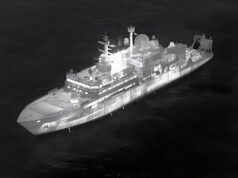

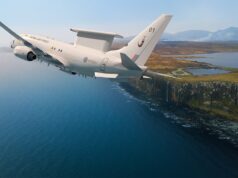
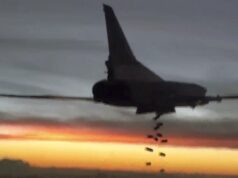
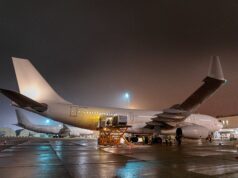

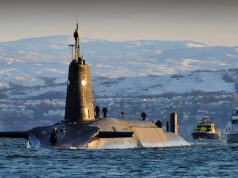
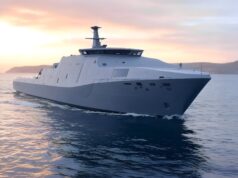


Fantastic news, I’m glad we’re rekindling old relationships, a permanent forward base in sembawang in the near to far future seems like a great sign of commitment and expanding our influence on the global stage. But I think realistically if we want to maintain any semi permanent presence in the far East were going to have to drop commitments in the west or add a few more ships, but give hope for the future and gives meaning to this global Britain campaign.
[…] post Royal Navy: A return to the Far East? appeared first on UK Defence […]
Occasional visits yes. Regular deployments no. We simply haven’t got the resources. China and Australia don’t regularly deploy to Europe. Nor does S Korea or Japan. We haven’t got enough to do what we need to do closer to home, let alone stretch our meagre resources so thinly.
P5 member though.
It is almost expected of us, that where the next flashpoint is in the world where the US is involved, there we will be.
The RN ought to make a return to Singapore. For securing SEA against the bullying expansionist Commies flowing down south. Welcome to the RN !
Craving the olde days of the Grand Union?
Cant we expand naval facilities in Brunei?
Its right in the heart of the SCS.
Theoretically yes. The relationship with Brunei remains strong but strategically, Brunei is seeking long term financial investment as it diversifies in anticipation of the Oil and Gas running out. The recent expansion of the port facilities and the development of an offshore facility for oil and gas tankers was achieved largely through Chinese investment. It would be tricky for Brunei to encourage Chinese investment on one hand and then poke the hornet’s nest with the other by inviting the RN to develop a base.
This is all jolly well but as opined here already, without additional hulls we are only spreading out what we have ever more thinly. The RN has – and is – doing a sterling job with the resources currently at its disposal. There is however, simply no escaping the need for a dramatic increase in hull numbers if required to maintain current and future taskings whilst remaining a viable combat force.
Mr Williamson is to be commended for his ardent and sincere defence of the Armed Forces. I do fear however, that HMG will pay mere lip service and the dangerous status quo will remain.
The UK government has just signed the death warrant for Tommy Robinson. There is a very high chance that they will be complicit in his murder. We are now living in a totalitarian state.
An ‘independent journalist’ who writes most of his ( anti Islamic) material for Breibart.
He publicises the gradual Islamification of the UK, and Europe, and was out side Leeds Crown Court reporting on Asian / Muslim Grooming gang case, and arrested for “breach of the peace”
If he is imprisoned for what he sees as “free speech” and imprisoned with Muslims who hate him it is said he will be got at in prison.
His downfall is that he was a leader of the EDL which has some unsavoury characters, so whatever he reports or says, true or not, the left will always get him for that connection.
Tommy Robinson is the founder of the English Defence League and former National Front member.
Tommy Robinson is the founder of the English Defence League and former member of the National Front
I am old enough to remember the days when a Tory politician lamented the fact that we had “only two Carriers east of Suez” !
Nit picking I know but the picture is Bulwark ( Old Ships!) not Albion which is mention in the article. Albion now has Phalanx fitted in place of Goalkeeper and Artisan in place of 996…
Gunbuster, from one nerd to another, well spotted sir!
This government is a disgrace. How can they justify massivly increasing the RN commitments whilst slashing it’s numbers at the same time? If a person got a pay cut but just shrugged and went out and started buying even more stuff, he would be called a fool. The government does it and it they try to pretend they’re doing nothing wrong.
Navies are all about LAND WARS – Take the last century WW1- the first U- Boat war. The disaster of Gallipoli And the German Battle Fleet restrained . WW2 — convoys America -UK (U-Boats). Dunkirk –complex- but saved an army ready to be re-built Supplying the Desert Rats , often with difficulty and trying to limit Rommel’s supplies . Then Russian convoys supplying the Red Army . The savage campaign in Burma had supply routes that were in where the U- boats were operating . RN submarines played a significant role supporting the 14th Army in Burma by sinking Japanese coastal supply boats making long passages from Australia to do so. . The aircraft has taken over much of the role of the Navy , Battle of Britain prevented the invasion of the British Isles and the Luftwaffe brought about the loss of Crete by the Commonwealth Army and sank a significant number of important RN ships The air over Normandy Beaches was controlled by the allied air force and the RN provided major bombardment .Then probably what was likely to be as bad as the invasion of Russia , the USN having brought their invading army to the coast of Japan . And then everything changed with the atom bomb – that nobody talks about anymore — yet I heard a live TV translation by Putin –he said no millions of dead Red Army soldiers next time , one step across the Russian Frontier today would instantly bring tactical nuclear weapons into play One could go on with examples in this hotch potch history , but war is about armies as you all well know if you stop thinking about impressive war ships with their aircraft and that the real purpose of a major war is armies fighting to take command of land areas . So what land armies have potential to engage over in the South China Sea , well some sand islands ,Taiwan well the politics of that one are doubtful – it historically belongs to China and is a left over from the Civil War and a matter of pride –but whether pride is enough to take on all the problems domestic or international, is very doubtful And surely nobody thinks China has any plans to invade Japan , but if it did –any foreign navies defending Japan would pay a very heavy price ?? Unless there was some kind of repeat of the Battle of Britain , but China has a huge number of land based missiles etc??? And always in the Eastern background –Russia –look at the map. No , the RN should not be in the area with too much presence , yet not enough aircraft etc to really engage in a land war — Taiwan or Japan —surely not over the sand bars ? So why are we there , being arms manufacturers is one thing , but giving live demonstrations in far away waters is really a step too far . To close –what on earth is this all about ??>>Defence Secretary’s speech on defence reform – GOV.UK (www.gov.uk)
A new standing commitment in the Pacific would only really work with present hull numbers if they went for a permant basing option.
It could work really well especially if the offer was made to Australia to perminatly base a 26. That would be a real ins entire for Auz to go for the 45. We would get a ready made infrastructure for supporting a 26, they would get extra work for their dockyard. The joint working around both nations having jointly based 26s would be remarkable. It would show all our friends in the Pacific (US, Cannada, Auz, NZ, Japan etc) that we are a global player.
This was what the 26s were made for, the MK41 launchers, unsurpassed ASW, Good AAW, add in a marine detachment, a pair of rotors and disaster pods in the mission bay, the UK would have an enduring Pacific presence that can react to every need, from hurricanes, drug interdiction, to credible participation in a major operation undertaken by allies.
We need our major warships in the hot spots not the cold spots in the future a more balanced approach to risk and need would pay dividends, in my fevered little mind deployments should look like this:
The south Atlantic is better served by long legged support ships for a presence in the BAT and long legged patrol ships for the Falklands (red ships and rivers2 perm based in Falklands) Maybe a 31 could visit if tensions went up. But as a deployment the standard should be no more complex warships, unless the risk changes.
The North Atlantic deployment is effectively an on going drugs patrol, with sessional disaster management, so a river2 with seasonal swap to RFA is appropriate, again no point using complex warships.
North Sea, this is a clear point of risk with Russia pushing though Submarines and aircraft. We should have a focused ASW patrol here with a 26. Our assault ships should spend most of their active deployment time working with Scandinavian and Baltic states supported by a 31. This area should also be a focus for our hunter killers. This deployment would include Deterrent security.
The channel, this All fisheries, boarder work and escorting passing warships. in this we need a bit of innovation, this is where we keep the rivers 1s to add to hull numbers,but so it does not hit manning in the RN we make the crews multi agency ( RN,boarder patrol and fisheries).
Med ( gib, maybe a couple more patrol boats would be nice)
Med eastern, again this area is becoming an area of contention between the west and Russian with access to the Black Sea, And choke points to the Middle East, as a standing deployment this should be a frigate/destroyer, I suspect our carrier and task group will spend most of their time here.
Middle East, as now with perm basing of a 31
Far East/Pacific perm base a 26 in Auz
That’s my rambles anyway.
I agree with a lot of that actually.
Just would not want our high end assets dispersed too much in case we needed to get a Task Force together.
It’s 2000 miles from Darwin to Singapore; 4k miles for a round trip. Singapore or Brunei would seem better basing options. Reading Gunbuster’s post on the preparation work that has been done for the T23 Gulf decision I would guess we are a ways off a similar ‘enduring’ decision for Asia.
Agree with Singapore, it’s a midway point with good reach and would support collaborative training with Aus, Singas and Malaysians. The docks at Singapore are excellent for ship maintenance and we also built a superb airport to support rotation of service personnel back to blighty for R & R. This would save some of the fuel bill since ships could be permanently stationed there, this cuts costs.
Well I would still like the RN to get 13 T26. If the missing 5 were in the proposed Australian Spec, i.e. AAW/ABM capable, it would help to fill the gap from cutting T45 numbers from 12 to 6.
Plus the 5 T31 on top.
So RN escorts would be 6 T45, 8 T26 ASW, 5 T26 ASW/AAW/ABM, 5 T31 = 24 escorts.
We have a £20 billion hole in the defence budget over the coming decade. Interestingly that is about the same sum we are about to give the EU as a leaving present. Fine if we get a good trade deal, but better spent on UK contribution to NATO, if the EU offers no deal or a poor deal.
Perhaps you could afford to have one warship in the Gulf, one in the Far East, at permanent bases where they did not need to sail back to UK for most maintenance. Then one patrol ship and ice patrol ship in the Falklands, one patrol ship in the Caribbean.
The Caribbean patrol ship could have its maintenance done in the Br. Virgin Islands. 😉